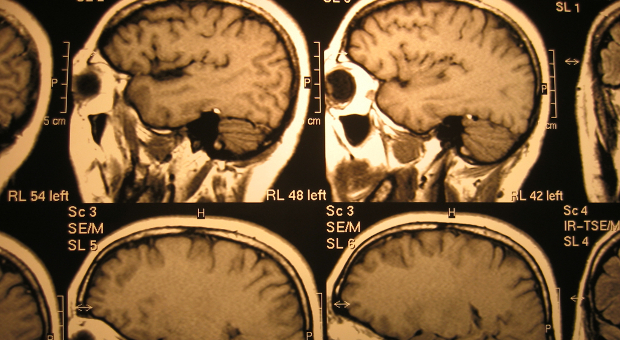Changes in protein may predict ALS progression

Measuring changes in certain proteins—called biomarkers—in people with amyotrophic lateral sclerosis (ALS) may better predict the progression of the disease, according to scientists at Penn State College of Medicine.
ALS, which is often referred to as Lou Gehrig's disease, is a neurological disease in which the brain loses its ability to control movement as motor neurons degenerate. The course of the disease varies, with survival ranging from months to decades.
“The cause of most cases of ALS remains unknown,” said James Connor, distinguished professor of neurosurgery, neural and behavioral sciences and pediatrics. “Although several genetic and environmental factors have been identified, each accounts for only a fraction of the total cases of ALS.”
This clinical variation in patients presents challenges in terms of managing the disease and developing new treatments. Finding relevant biomarkers, which are objective measures that reflect changes in biological processes or reactions to treatments, may help address these challenges.
The project was led by Xaiowei Su, an M.D./ Ph.D. student in Connor's laboratory, in collaboration with Dr. Zachary Simmons, director of the Penn State Hershey ALS Clinic and Research Center. Su studied plasma and cerebrospinal fluid samples previously collected from patients undergoing diagnostic evaluation, who were later identified as having ALS. Analysis shows that looking at multiple biomarkers to predict progression is not only mathematically possible, it improves upon methods using single biomarkers.
Statistical models analyzing plasma had reasonable ability to predict total disease duration and used seven relevant biomarkers. For example, higher levels of the protein IL-10 predict a longer disease duration. IL-10 is involved with anti-inflammation, suggesting that lower levels of inflammation are associated with a longer disease duration.
The researchers identified six biomarkers for cerebrospinal fluid. As an example, higher levels of G-CSF, a growth factor known to have protective effects on motor neurons — the cells that die in ALS — predicts a longer disease duration.
Perhaps most importantly, the results suggest that a combination of biomarkers from both plasma and cerebrospinal fluid better predict disease duration.
While the size of this study is small, the ability of the specific biomarkers used to predict prognosis suggests that the approach holds promise.
“The results argue for the usefulness of researching this approach for ALS both in terms of predicting disease progression and in terms of determining the impact of therapeutic strategies,” Connor said. “The results present a compelling starting point for the use of this method in larger studies and provide insights for novel therapeutic targets.”
Other researchers on the study were Lan Kong and Helen Elizabeth Stephens, Penn State College of Medicine; and Ryan Mitchell, University of Washington Medical Center.
The Paul and Harriett Campbell Fund for ALS Research, the Zimmerman Family Love Fund, and the ALS Foundation, Philadelphia chapter provided funding for this work.
If you're having trouble accessing this content, or would like it in another format, please email Penn State Health Marketing & Communications.
